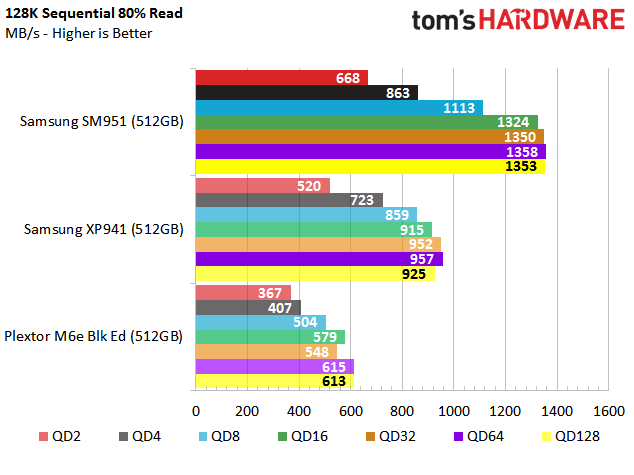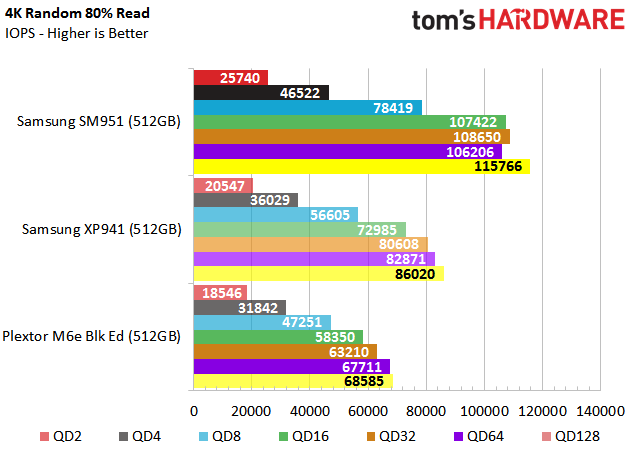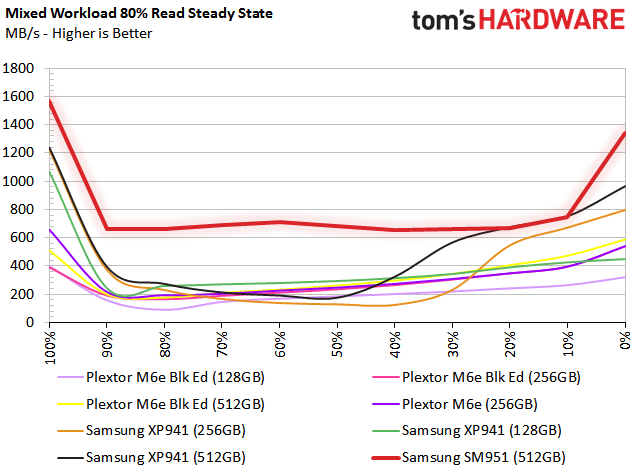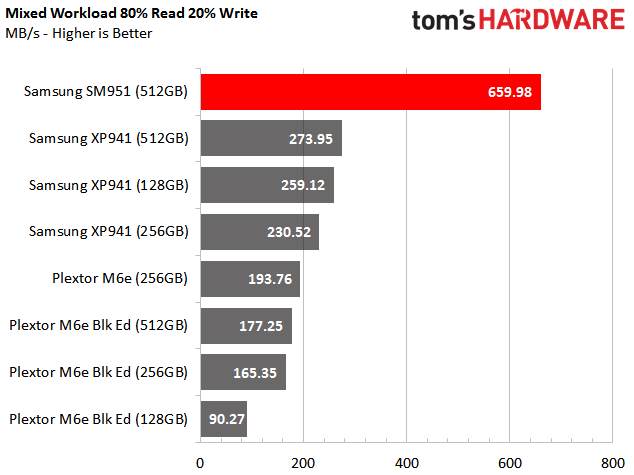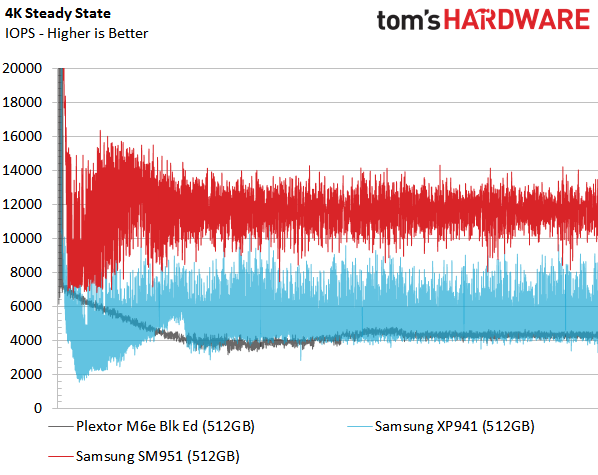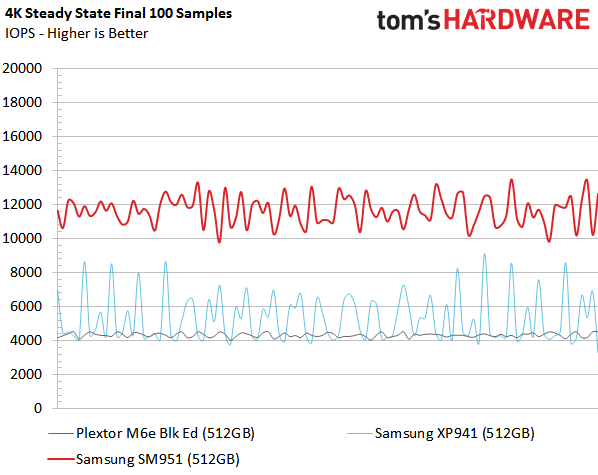Samsung SM951 PCIe M.2 512GB SSD Review
Samsung introduced the SM951 last July during its annual SSD Global Summit in South Korea. Today we're running the drive through our benchmark suite to see if it lives up to the hype.
Why you can trust Tom's Hardware
Mixed Workload and Steady State Testing
In the past, we could look at four-corner performance to get a good idea of how a product would act in the real world. That's no longer the case, though. Mixed-workload tests yield more useful info on what your SSD does while multitasking and running background software.
128K Sequential, 80% Read Mixed-Workload Performance
4KB Random, 80% Read Mixed-Workload Performance
The products we're testing today make this section fairly dry, but when you start looking at a larger sample size of SATA-based SSDs, the mixed-workload results get more interesting.
128KB Sequential Mixed-Workload Steady State Performance
In this test, we start out with the drives in steady state and then add sequential reads in 10% increments. Documents published by Intel suggest that consumer workloads should be measured with 80% reads and 20% writes. All drives give up performance when they're presented with mixed-data workloads, but we're looking for the product that suffers the least.
We brought in all of the PCIe-based M.2 drives we had on hand for this chart. Until the SM951, PCIe drives were actually slower than premium SATA-based products in our 80% read test. Many of the early controllers used modular designs with leftover vestiges of the SATA era. That would make them half-duplex and unable to process read and write commands at the same time. The SM951 is different; it performs exceptionally well under a mixed workload.
4KB Random Write Steady State Performance
We're looking for straight lines that show consistent performance, rather than large gaps between the highs and lows. SSDs that can serve up a stable experience are better for RAID arrays. Believe it or not, it's possible for two slower SSDs with consistent performance to outperform a pair of faster, more sporadic drives. Latency increases are compounded as the drive count in an array goes up, since one SSD has to wait on the other.
For PCIe-based M.2 products, we don't have to worry about RAID for boot arrays right now. The current rumor is that Intel will have a driver available around the release of Skylake for consumer PCIe RAID.
Get Tom's Hardware's best news and in-depth reviews, straight to your inbox.
Current page: Mixed Workload and Steady State Testing
Prev Page Four-Corner Performance Testing Next Page PCMark 8 Real-World Software Performance
Chris Ramseyer was a senior contributing editor for Tom's Hardware. He tested and reviewed consumer storage.
-
blackmagnum This is an awesome upgrade for some Macbook Air/Pro users, but just wait until Intel shows their product... and will there be any hardware compatibility issues with DIY upgrades?Reply -
Sakkura I'm disappointed the promised NVMe support did not materialize. But I guess Samsung is saving that for later retail products. Can't argue with the performance though, this is by far the fastest consumer SSD around.Reply -
tom10167 I wish they'd put an 840 or 850 pro in the comparison just to give us a better sense of scale. This drive is incredible, though, and $550 for a 512GB cutting edge drive is not terrible!Reply -
mapesdhs The Power Restricted Performance graph is stupid. Please stopping usingReply
graphs with origins that don't start at zero - the visual graphic impact is
totally meaningless.
Ian.
-
jeffunit You might want to fix the labels of your graphs. Latency in seconds? One chart shows a write speed of about 80 gigabytes per second.Reply -
liquidpower I also wished they put a 850 pro in the charts to see the jump from the fastest sata to the PCIe-based M.2Reply
